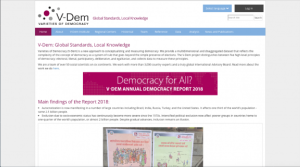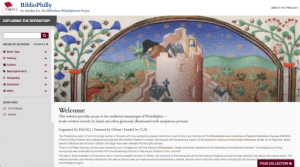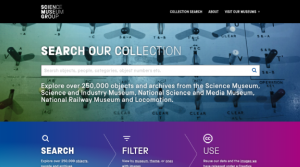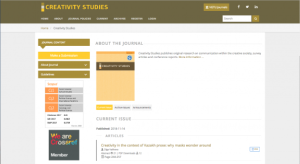General Interest
Back to Top
|
 |
|
UL Xplorlabs
|
Educational Technology |
|
From the safety science company Underwriters Laboratories (UL) comes UL Xplorlabs: a free educational platform offering interactive, module-based learning experiences. Launched in 2016, UL Xplorlabs currently offers two multifaceted modules, each aligned with Next Generation Science Standards and focused on real-world topics. The first module, Portable Electric Power, "explores the science of lithium-ion batteries," while Fire Forensics: Claims and Evidence, introduces students to the basics of fire science and was nominated for a 2018 Webby Award. Modules include downloadable teacher guides, interactive videos and simulations, collaborative classroom activities, and extension activities. Educators may choose to do an entire module with their class or just part of it, and the modules can also be done by the students independently. While UL Xplorlabs' modules are designed for middle school students, STEM instructors at other levels may also find this resource's content helpful. The Xtensions section offers a number of experiments, resources, and challenges that educators may like to check out as well. New modules will be added as UL develops them, and those interested can subscribe to be notified of new content via email. [JDC] |
|





|
|
 |
|
Varieties of Democracy
|
Social studies |
|
Varieties of Democracy (V-Dem) is an international, collaborative research project that aims "to produce new indicators of democracy for all countries since 1900." Visitors to this ambitious project will find a number of interesting resources, including their annual democracy reports (currently available for 2017 and 2018); other publications (such as country reports and thematic reports); and a variety of analysis tools, such as interactive maps and motion charts. Social science researchers may be particularly interested in the V-Dem datasets, which (at the time of this write-up) include data for 201 countries and extend as far back as the year 1789 up to 2017. These datasets, which are released yearly around April, also include "450 V-Dem indicators, 47 mid-indices and 5 high-level indices," as well as documentation for each dataset and are available in formats such as SPSS, STATA, and Excel. Originally headquartered at the University of Notre Dame's Kellogg Institute for International Studies, V-Dem is now headquartered at the V-Dem Institute in the University of Gothenburg (Sweden). The University of Notre Dame became V-Dem's Regional Center for North America in 2018. V-Dem is funded by many organizations, including the European Research Council, the National Science Foundation, Riksbankens Jubileumsfond, and the World Bank. [JDC] |
|





|
|
 |
|
BiblioPhilly
|
Arts |
|
Fans and scholars of medieval illuminated manuscripts may enjoy BiblioPhilly, a new digital interface for the Bibliotheca Philadelphiensis project. This three-year project, which launched in 2016, has been digitizing 160,000 manuscript pages held by 15 libraries to "create the country's largest regional online collection of medieval manuscripts." The BiblioPhilly interface was made public in November 2018, and the project is due to be completed in the spring of 2019. Visitors to BiblioPhilly can search this repository of manuscripts by keyword and filter their search by facets such as book type, century, geographic origin, and more. Upon selecting a manuscript, visitors are treated to high-resolution, full-color images with an interactive page-turning interface, as well as descriptive metadata, additional images of its binding, and other information. Images and their metadata are also freely available to download under a Creative Commons license. The Bibliotheca Philadelphiensis project was funded by a grant from the Council on Library and Information Resources, and it was organized by the Free Library of Philadelphia, Lehigh University, and the Penn Libraries. [JDC] |
|





|
|
 |
|
Science Museum Group: Collection Search
|
Science |
|
Anyone with an interest in the history of science and technology will likely enjoy exploring the online collections of the Science Museum Group, which consists of five museums located in the UK. Their digital collections currently contain more than 250,000 objects and over 29,000 archival documents, all drawn from the Science Museum Group's vast collections of approximately 7.3 million items. From the homepage, visitors can search and filter the collections, explore by themes such as medicine or railways, and see a selection of collection highlights, which may include diverse categories such as cinematography, toys and games, mathematics, and creative industries. Entries for individual items generally include a brief description explaining its significance, classification details, links to related objects or people, and whether the item is currently on display at one of the group's museums. Most of the collection images are available to download under a Creative Commons Noncommercial license, and the Science Museum Group encourages visitors to use and reuse their collection data. [JDC] |
|





|
|
 |
|
Environmental Performance Index
|
Science |
|
One of the challenges in crafting environmental policy is determining how to measure a policy's effectiveness. The Environmental Performance Index (EPI) aims to help simplify this process by analyzing and organizing data to "provide a gauge at a national scale of how close countries are to established environmental policy goals." Here, interested readers will currently find the EPI's most recent report (released in 2018), which quantitatively "scores 180 countries on 24 performance indicators across ten issue categories covering environmental health and ecosystem vitality." This report, written in accessible language, includes an introduction, a brief explanation of their methodology, a summary of their results, and sections addressing each of the ten issue categories in greater depth, as well as an executive summary for policymakers. Readers may also be interested in the categorical lens (found under the results menu), which provides concise explanations of the EPI's issue categories and corresponding performance indicators. Those interested in accessing the report's data and the specifics of its methodology will find these in the downloads section. The EPI is produced jointly by the Yale Center for Environmental Law & Policy and Columbia University's Earth Institute, in collaboration with the World Economic Forum. New EPI reports are released biennially in even-numbered years. [JDC] |
|





|
|












